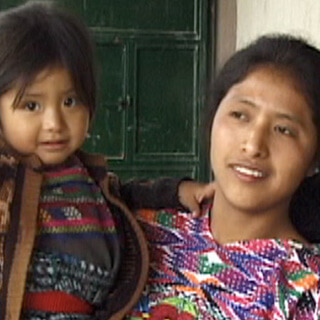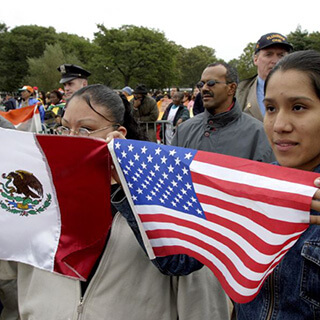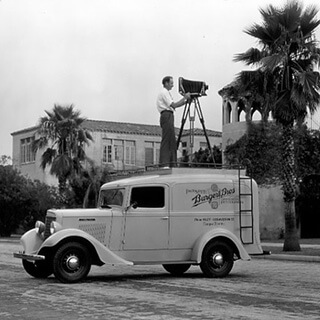Overview
Iliana Yamileth Rodriguez reviews Cecilia Márquez's Making the Latino South: A History of Racial Formation (University of North Carolina Press, 2023) and Sarah McNamara's Ybor City: Crucible of the Latina South (University of North Carolina Press, 2023).


Introduction
In 2003, Raymond Mohl’s description of the “latinization” of the late twentieth century US South (the “Nuevo New South”) helped set the stage for an expanding body of cross-disciplinary research on Latinx migration, settlement, and everyday experiences.1Raymond Mohl, “Globalization, Latinization, and the Nuevo New South,” Journal of American Ethnic History 22, no. 4 (2003): 31–66. While scholarly writing such as Mohl’s documenting this demographic shift offered important insights into the labor and settlement experiences of migrants, there was often little work done to use the geographical imaginary of a “Nuevo South” critically. Rather, as historian Perla Guerrero would later write: “in many instances the term ‘Nuevo South’ is used as if it were self-explanatory, or, in some of the more egregious cases, the word ‘nuevo’ is used simply in an exoticizing manner—Latinas/os are moving to the South and they speak Spanish, so we can now refer to the South as the ‘Nuevo South.’”2Perla Guerrero, Nuevo South: Latinas/os, Asians, and the Remaking of Place (Austin: University of Texas Press, 2017), 8. Guerrero makes a compelling argument for the use of “Nuevo South” as an important political economy and historical framework for understanding racial formations. As the field has continued to grow, however, new works are bringing a critical and longer historical perspective to southern Latinx populations, communities, and experiences. This includes two recent books by historians Cecilia Márquez—Making the Latino South: A History of Racial Formation (2023)—and Sarah McNamara—Ybor City: Crucible of the Latina South (2023).
Importantly, the idea of “southern” Latinx history being a new phenomenon is not a driving force in either book. Rather, these works contribute a longer understanding of the Latinx migrations to/through US southern spaces that have contributed to shaping racial hierarchies, labor landscapes, and diverse migrant communities. As two books concerned with individual and collective experiences within a shifting racial hierarchy, Making the Latino South and Ybor City significantly historicize and spatialize Latinx presence in the US South prior to the late twentieth century. Together, Márquez and McNamara call on readers to reject a monolithic definition of latinidad, specifically by paying attention to histories and politics of ethnicity, race, gender, labor, geography, and generational cohorts.
Shifting Racial Hierarchies
In Making the Latino South, Márquez places Latinos at the center of a history that lays bare the ways in which anti-blackness and white supremacy have shaped questions about culture, education, identity, and labor as experienced by Latinos living and working in various locations across the US South. “The history of Latino people offers a new and complex way of understanding the history of race in the South,” writes Márquez. “It is not a monolithic past, and it is one that refuses simple narratives about race.”3Cecilia Márquez, Making the Latino South: A History of Racial Formation (University of North Carolina Press, 2023), 17. Between the 1940s through early 2000s, Márquez places questions about Latino racialization at the center of historical investigations into matters of culture, education, identity, and labor. Across five chapters that illuminate localized Latino histories in Alabama, DC, Georgia, Mississippi, North Carolina, and South Carolina, Márquez shows how the racial position of Latinos shifted at the turn of the century. At the center of Making the Latino South is the necessary understanding that “Latino” functions as a constructed category shaped by spatial histories and understandings of race, all of which impact Black and non-Black Latinos in distinct manners.
Marquez’s first three chapters demonstrate how some Latinos benefited from a “provisional whiteness” as they attended white schools, used white facilities, and enjoyed greater overall mobility in the Jim Crow era. She begins in Washington, DC, with Karla Galarza and her family. Galarza’s experiences in seeking education within the city’s segregated school system highlight how “non-Black Latino people were understood through a mosaic of racial categorizations,” with varying characteristics (i.e. skin color, language usage, citizenship status) used to demarcate Latinos’ “proximity or distance from Blackness.”4Márquez, 21.

Next, Marquez moves from individual Latino experiences to the ways white southerners imagined and used “Latinoness” to negotiate their anxieties over a shifting racial landscape amid growing civil rights activism. In telling of the infamous South of the Border roadside attraction in South Carolina, Márquez shows how the tourist destination’s racialized figure—or, rather, mascot—“Pedro” illuminated white imaginations about racial hierarchies that increasingly included Latinos. Even with the absence of Latinos in upcountry South Carolina between 1945 to 1965, a “fantasized mexicanness” proved fruitful for a business class that sought to give an escape to white consumers seeking to “revel in the pleasures of racial subjugation.”5Márquez, 16.
The third chapter of Making the Latino South delves into the Civil Rights Movement, as Márquez excavates the experiences of Latino activists who traveled to the South to work with the Student Nonviolent Coordinating Committee. Between 1960 through 1970, non-Black Latino activists Elizabeth “Betita” Mártinez, Maria Varela, and Luis Zapata lent their support to the movement. As first-time travelers to/through this section of the US, these Latino activists encountered Jim Crow in ways that illuminated their proximity to whiteness. It was, in other words, their “Latinidad” and “non-Blackness” that shaped their experiences with SNCC, including the expulsion of non-Black members in 1966. “The expulsion,” Márquez explains, “recast in light of the history of Latino people in the South, highlights the regional nature of SNCC’s racial vision.” Both white and Black southerners’ understanding of Latino racialization, however, would shift as the 1970s and 1980s saw an increase in migration of working-class, undocumented, darker-skinned Latinos.

Márquez captures the shift that occurred in the late twentieth century as a larger non-white Latino population settled into southern destinations and were racialized both favorably and negatively as “hardworking” and “illegal.” A pivotal point arrives in the 1980s when Latino racialization shifted from a provisional whiteness to a distinct marginalized group that, on the surface, received a warm welcome. Márquez brings important attention to Dalton, Georgia, an industry town known for carpet manufacturing and for its seemingly positive embrace of Mexican arrivals. Here, industry leaders and other local actors cast Latinos as “hardworking,” which allowed white elites to “participate in what they saw as racially progressive ideology” while maintaining an exploitable laboring class.6Márquez, 149. The celebration, and exploitation, of the “hardworking” Latino narrative gave way to a new racial script after 9/11. Márquez traces how anti-immigrant sentiments that began in the 1990s contributed to the casting of Latinos as “illegal” by the early 2000s. While Latino remained a racially diverse category that included Black and non-Black people, “citizenship, race, class, color, and other identities continued to structure how Latino people” were racialized and marginalized.7Márquez, 180.
Racial categorization shifted between the 1940s through 2000s for Latinos, and Márquez reminds us that, “What is shared across the broad time period is a racialization defined, in large part, by Blackness. It is anti-Blackness and white supremacy that have defined the contours of Latinidad in the South.”8Márquez, 184. This is a critical insight that, as the author notes, opens more questions than it offers answers on the experiences of Black Latinos. There is much more work to do in recording and understanding aspects of living and working in southern spaces for Black Latinos. Falling outside the scope of Marquez’s particular project, Making the Latino South also does not contend with the question of indigeneity as it relates to the population and the (re)shaping of racial hierarchies. The book’s strengths lie in its centering of Blackness, an emphasis that will continue to shape the field’s attention to race as it relates to a diverse Latino population.
While Márquez draws readers’ attention to the role that gender plays in shaping Latino experiences, it is not central to her book. For that, we can look to Sarah McNamara’s recent work that not only highlights gender in this southern history, but rather makes it a central framework for understanding community making processes in an unequivocal Latino borderland—Tampa, Florida’s Ybor City.
Gender, Labor, & Generational Politics

McNamara’s Ybor City: Crucible of the Latina South offers an exciting multi-scale history told from a local vantage point that attends to the realities of diasporic life in a southern “transnational, multi-racial borderland” that was shaped, in large part, by Latinas who worked and organized around the cigar industry. Women, she argues, shaped the trajectory of the Latina/o community and the subsequent ways it would be celebrated and remembered well after the cigar companies and families moved out of Ybor City. Across four chapters that examine three generations of Latinas/os “who struggled, worked, and dreamed in Ybor City and Tampa, Florida,” Sarah McNamara introduces individuals and families who built the first sustained Latina/o community in Florida.9Sarah McNamara, Ybor City: Crucible of the Latina South (Chapel Hill: University of North Carolina Press, 2023), 10.

Ybor City begins by attending to the ways that categories of gender and race intersected with Latina and Latino labor, politics, and understandings of community and nation. McNamara situates Tampa as a “an international borderland where people and ideas competed for authority” over the meaning of space and place since the sixteenth century. It was not until the 1880s that Tampa, or the neighborhood of Ybor City, became a truly transnational city with the increased arrival of Latina/o laborers, who were primarily Cuban. Examining these early years of placemaking, McNamara unravels the everyday experiences and relationships that animated the establishment of a Latina/o city and shows how the “cigar factory floor was [both] a refuge and a revolutionary space.”10McNamara, 29.
Next, McNamara takes up the leftist, anti-fascist, and transnational revolutionary politics of Latinas who worked and organized within the cigar industry and their communities in the early twentieth century. She expertly weaves renowned labor organizer Luisa Moreno’s work in Florida with the experiences of Latinas who worked and lived in Ybor City, showing how “the women [that Moreno] organized influenced her even more than she influenced them.”11McNamara, 61. Latinas’ fights for labor and human rights, as well as complex questions about ethnic and racial identities, in Ybor City highlighted the struggle of organizing in a place “where one’s sense of self was fluid and in constant negotiation with anti-radical and anti-immigrant powers within the US South and politically leftist ideologies” that animated Latina/o transnational networks of solidarity.12McNamara, 82. Leftist struggles, however, would come increasingly under question as the late 1930s saw the rise of anti-radical sentiments and politics.
Alongside critical attention to gender and the ways it shaped laboring, organizing, and community spaces for Latinas in Ybor City, McNamara points readers to another important social positionality that shaped people’s politics—generational cohorts. She depicts the shift from a leftist radical laboring Latina/o population, to one that “fought to survive in a shifting world where public perception mattered.”13McNamara, 106.While capturing the varying ways Black and white Cubans navigated social, cultural, and educational institutions during the Jim Crow era, McNamara also shows how “Cuban” became a category deemed undesirable (often cast as a group of un-American “foreign subversives”) within Tampa’s Anglo population. US-born Latinas/os who witnessed the marginalization of their elders developed their own practices to demonstrate patriotism (or Americanness), which included Latinos enlisting in the army and Latinas engaging in volunteer and community advocacy work. In the shifting labor and racial landscape of the 1940s, Latinas continued to advocate for themselves, their families and community members “in Anglo-controlled spaces by laying claims to their right…to belong.”14McNamara, 137.
As the war ended and young Latinas/os returned to everyday life, many saw their futures as lying outside of Ybor City’s cigar industry. McNamara follows the ways in which Latinas/os with roots in Ybor City navigated questions about memory, community, and belonging. She argues that the process of “remaking” the community in the postwar era necessitated obscuring the “radical leftist past” of Ybor City, to make way for a “moderate, yet progressive, present” that Latinas/os could use to enter mainstream politics.15McNamara, 140. Delving into three distinct political moments between 1948 through 1970 (the Henry Wallace campaign; the Cuban Revolution; urban renewal), McNamara highlights Latinas’ presence—and, at times, absence—in shaping local political mobilizations and responses to deindustrialization and urban renewal. She shows how, more than just a capital for cigar manufacturing, Ybor City was a place made, and remade, by distinct generations of Latinas/os who had varying approaches to negotiating issues of race, ethnicity, gender, and labor, all of which informed the ways the community would be remembered for years to come, whether through local museums or at family dinner tables.

With her multi-generational analysis that shows change over time through the experiences of those whose lives intersected with and/or shaped Tampa and Ybor City, McNamara asks readers to “rethink what it means to be of Cuban descent, live in Florida, survive in the South, and advocate for visibility and representation within the United States."16McNamara, 13. Like Márquez, she is attentive to the racial diversity of the population, writing that “U.S.-born Latinas and Latinos disavowed radical, leftist politics and defined themselves against Blackness to transform their image from foreign subversives to acceptable U.S. citizens.” She continues by noting that this resulted in a “the creation of a new ethnic, non-Black identity as well as proximity to Anglo society and the gain of political power.”17McNamara, 10. There is some attention to the specific experiences of Afro-Cubans throughout the book, especially as related to the organization of mutual aid societies in the early decades of the twentieth century.
It is McNamara’s specificity that makes Ybor City a key contribution to the postwar, place-based histories of Latinas/os living and working in the various regions of the South. “Too often,” she writes, “Ybor City, and even Florida, is seen as an exception – a place where latinidad is everywhere and has always existed and is therefore unnecessary for inclusion in broader and more expansive understandings of Latinas/os within the South and the nation.”18McNamara, 15. By examining this “exception,” Sarah McNamara offers a hemispheric history that informs how Latinas/o lived experiences are shaped by time and place. Another important dimension of Ybor City is its serious consideration of the individual and familial histories. As more Latinx scholars who are born and/or raised in southern spaces record our own histories, McNamara’s book will serve as a model for how to balance individual, familial, and communal histories with attention to (trans)national historical processes.
When and Where You Are Latinx Matters

With attention to matters of ethnicity, race, migration, transnationalism, class, labor, gender, and generational cohorts, Cecilia Márquez and Sarah McNamara offer us important critical readings. Making the Latino South and Ybor City highlight the intersections of race, gender, and place, constructed categories that have historically informed hierarchies of desirability and belonging. They show the diversity of identities and experiences that shaped Latina/o life between the late nineteenth through early twenty-first centuries.
These scholars also raise important questions about scale. Márquez’s book is less a history of specific Latino communities and more a story of how this diverse group came to be described, or rather racialized, as “Latino.”19Márquez, 4. Geography and racial hierarchies are at the center of her investigations into racialization processes in Alabama, DC, Georgia, and the Carolinas. On the other hand, McNamara begins with her familial roots in Ybor City’s radical Latina history, and extends her analysis to encompass Ybor City as a node within a borderlands where the Caribbean and US South meet and shape each other. These books model balancing of the multitude of voices of everyday Latinx historical actors.
Márquez and McNamara held a roundtable discussion at the 2023 Southern Historical Association meeting in Charlotte about the shifting terrain of Latinx history. Márquez made a key aspect of Latinx history clear: “when and where you are Latino matters.” Later in the same session McNamara added that, along with generational cohorts, “migration patterns matter.” With the various Latinx migrations to/through southern spaces since the late nineteenth at top of mind, the discussion highlighted the nuances of writing Latinx history from a southern vantage point. The conversation illuminated Chicana historian Vicki Ruiz’s argument that “region is intricately tied to Latina identity.” With attention to geographic and temporal specificities, Márquez’s Making the Latino South and McNamara’s Ybor City each demonstrate how Latina/o/x individuals, families, and communities navigated, understood, and claimed southern spaces over time. With their critical attention to the importance of regional racial formations, histories of racial capitalism, and the varied dimensions (racialized, gendered, generational) of Latinx identities and community formations, Márquez and McNamara have each made contributions that enrich more than two decades of scholarship. 
About the Author
Iliana Yamileth Rodriguez (“Yami”) is a historian of US Latinx communities. With a research emphasis on the US South, Rodriguez’s scholarship examines Latinx experiences in relation to culture, race, ethnicity, labor, and migration. Her current book project, “Mexican Atlanta: Migrant Place-Making in the Latinx South,” traces the history of Metro Atlanta’s ethnic Mexican community formation and broader Latinx connections beginning in the mid-twentieth century.
Cover Image Attribution
"A bit of Old Spain as seen at Ybor City, Tampa, Florida," ca. 1930–1945. Postcard. Courtesy of the Tichnor Brothers Postcard Collection, Boston Public Library.
Recommended Resources
González, Gabriela. Redeeming La Raza: Transborder Modernity, Race, Respectability, and Rights. New York: Oxford University Press, 2018.
Guerrero, Perla M. Nuevo South: Latinas/os, Asians, and the Remaking of Place. Austin: University of Texas Press, 2017.
Matos, Yalidy. "A Legacy of Exclusion: The Geopolitics of Immigration and Latinas/os in the South." Labor: Studies of Working-Class History in the Americas 16, no. 3 (2019): 87–93.
Rodriguez, Iliana Yamileth. "Listening to El Southside: Kap G’s Southern Mexicanidad." Labor: Studies of Working-Class History in the Americas 16, no. 3 (2019): 95–101.
Web
"Migration, Mobility, Exchange, and the US South." Southern Spaces. 2010–2011. Special series. https://southernspaces.org/series/migration-mobility-exchange/.
Varela, Maria. "Oral History Interview." Civil Rights History Project collection, Library of Congress. Interview by David P. Cline. Pasadena, CA, June 29, 2016. Video with transcript, 1:40:46. https://www.loc.gov/item/2016655434/.
"Ybor City Oral History Project." University of South Florida Digital Collections. 2008–2020. Audio interviews with transcripts. https://digitalcommons.usf.edu/ybor_ohp/.
Similar Publications
| 1. | Raymond Mohl, “Globalization, Latinization, and the Nuevo New South,” Journal of American Ethnic History 22, no. 4 (2003): 31–66. |
|---|---|
| 2. | Perla Guerrero, Nuevo South: Latinas/os, Asians, and the Remaking of Place (Austin: University of Texas Press, 2017), 8. Guerrero makes a compelling argument for the use of “Nuevo South” as an important political economy and historical framework for understanding racial formations. |
| 3. | Cecilia Márquez, Making the Latino South: A History of Racial Formation (University of North Carolina Press, 2023), 17. |
| 4. | Márquez, 21. |
| 5. | Márquez, 16. |
| 6. | Márquez, 149. |
| 7. | Márquez, 180. |
| 8. | Márquez, 184. |
| 9. | Sarah McNamara, Ybor City: Crucible of the Latina South (Chapel Hill: University of North Carolina Press, 2023), 10. |
| 10. | McNamara, 29. |
| 11. | McNamara, 61. |
| 12. | McNamara, 82. |
| 13. | McNamara, 106. |
| 14. | McNamara, 137. |
| 15. | McNamara, 140. |
| 16. | McNamara, 13. |
| 17. | McNamara, 10. |
| 18. | McNamara, 15. |
| 19. | Márquez, 4. |







